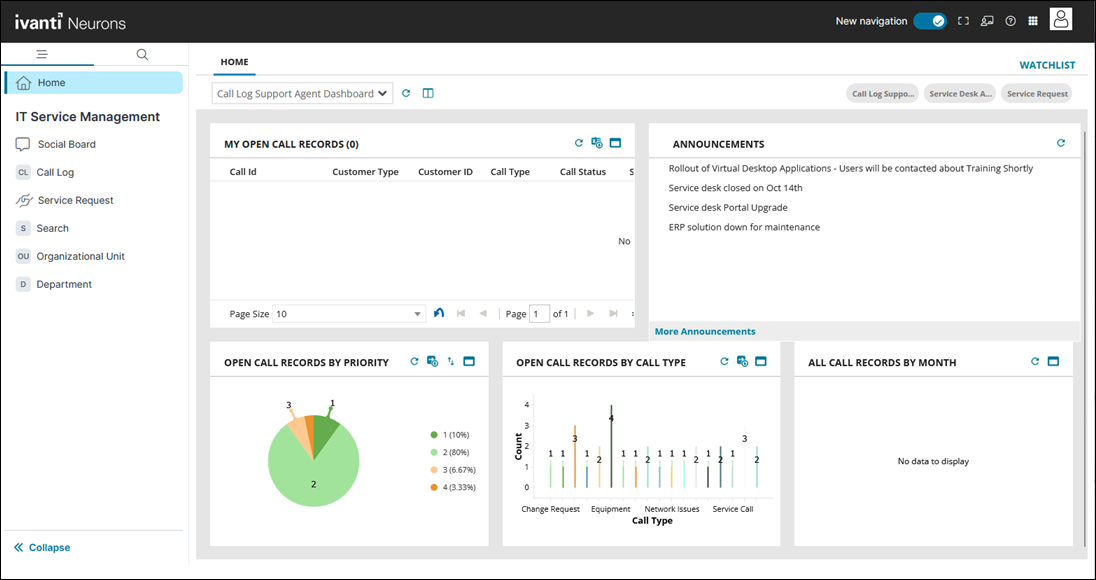App login and navigation
This topic explains you to choose your preferred app view and how to log in to it and navigate. There are currently two views or navigation you can experience for ITSM: The classic experience and the unified product experience via the Neurons Platform.
Classic view
ITSM Classic View is the traditional interface used in Ivanti’s IT Service Management platform. It features a familiar menu layout and navigation style that long-time users are comfortable with. It provides easy access to core ITSM modules using a structured and detailed format that supports efficient service operations.
Available to all legacy ITSM users prior to version 2024.3.
Classic View Home Page
For more information, see Classic view.
Unified Product Experience
Unified Product Experience (UPE) provides a centralized platform where you can link all your Ivanti products such as Unified Endpoint Management, Neurons for ITSM, and Modern Device Management and navigate between them seamlessly, without requiring multiple authentications.
Available to users who have both Neurons and ITSM license.
New Navigation Home Page
For more information, see Unified Product Experience.

